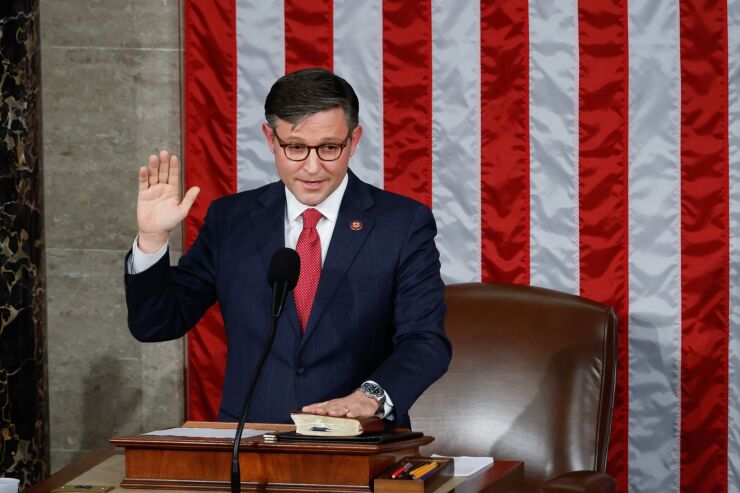As government funding deadlines loom just weeks away, cities and states face fallout from federal aid cuts, the claw back of pandemic funds and reductions in the always-vulnerable Build America Bond subsidies.
The federal government is currently
“There are lots of different segments of funding that are at risk here,” said Emily Brock, federal liaison for the Government Finance Officers Association. “It’s inevitable there will be spending cuts,” Brock added. “It’s just a question of where they will be.”
Bloomberg News
House Republicans and Senate Democrats so far have been unable to even agree on top-line spending levels for fiscal 2024, although Senate Majority Leader Chuck Schumer said Wednesday that he and House Speaker Mike Johnson are “quite close” on a final figure.
Under a
In lieu of 12 new appropriations bills, the possibility of a year-long continuing resolution that adheres to the debt deal’s spending caps has become a possibility. On Friday, Office of Management and Budget Director Shalanda Young said the White House would remain open to the option if the sequester mechanism is turned off, according to reports.
Johnson is pushing for lower spending by clawing back $6 billion in pandemic funds and accelerating $20 billion in Internal Revenue Service cuts that are part of the debt deal.
As appropriations bills or a short-term solution remain in flux, the size of the cuts that would be required if Congress fails to hammer out a deal remain uncertain, the Congressional Budget Office said Thursday in a
“[F]uture legislation may provide different amounts of funding, cancel previously provided budget authority, alter the amount to be constrained by the caps, or determine how much funding might qualify for adjustments,” the CBO said. “The form and timing of any legislation that provides funding, and whether it specifies any requirements for the administration to follow in implementing sequestration procedures, also will be important.”
If full-year appropriations end up totaling the amounts in the current continuing resolution, a sequestration of 9% would be required to enforce the nondefense cap, the CBO said. All non-exempt discretionary funding is vulnerable to cuts, including emergency, disaster, and some money in the Infrastructure Investment and Jobs Act, according to the Office of Management and Budget.
Meanwhile, direct-pay bonds like Build America Bond subsidies remain subject to sequestration after issuer advocates
“Build America Bonds have been vulnerable since Day One,” Brock said. “BABs will continue to be something that we need to remain vigilant about.”
